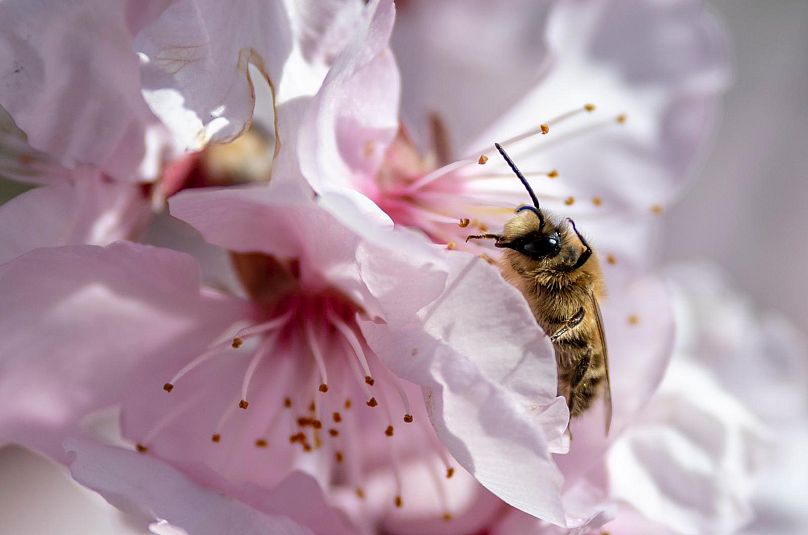Spain is amongst the world's biggest exporters of almonds, so a bad harvest can have serious economic implications.
Almond blossoms always used to be a welcome sign that spring was on its way in Spain.
But the pretty pink flowers are no longer a reliable indicator, as climate change throws the seasons out of sync.
2023 was the third-driest year in Spain since records were started in 1964. The Mediterranean country also had its hottest summer on record.
And according to climate experts, the Mediterranean is expected to be one of the fastest warming regions of the world in the coming years.
In the southern town of Almogía, the almond tree provides a livelihood for hundreds of families.
Cristobal Torreblanca - who is also the local mayor - cultivates both almond and olive trees, and has noticed a change in the flowering of their blossoms.
If the fruit is then hit by a late frost the crop is ruined, he explains.
"There has been a change in the climate, and what this does is that it flowers earlier, and the almond flowers and when a cold day comes, it kills it, it freezes it.”
What does a bad almond harvest mean for Spain?
Spain is the world’s second largest producer of almonds (after the US), and among the biggest exporters of the seed. So a bad harvest can have serious economic implications, explains Enrique Salvo Tierra, a professor of botany at the University of Malaga.
"In recent years, we have detected that due to global warming, almond blossoming has been much earlier than expected. So those flowers are blooming, those fruits are being born, with two fundamental risks, which have been generated by global warming.”
“The first risk is that frost may come, below 4°C, which destroys the flower and therefore the development of the fruit,” he says.
Secondly, flowers are appearing out of sync with pollinators. That’s a problem as the fruit will not form unless the flowers are pollinated.
“Flowering is brought forward so much that they do not manage to hold on until pollinators appear, whether they are beetles, butterflies or the most important one: bees.”
How are bees impacted by early blossoms?
Beekeepers like Inma Molero are also concerned. She says that unseasonable weather can also affect flowering, and no flowers means no food for the bees.
“If the almond tree suffers frost, and there is too much and it is too early, the bee can not use it, if there is a very dry autumn, an autumn with little rain, then it is unfeasible for the bee to get the pollen and protein to survive the autumn,” she says.
Molero says beekeepers and farmers must work together to protect their livelihoods.
"People working in agriculture have to be united, because pollination is one of the most important activities that exists, and many crops need our hives, as in the case of almond trees, where pollen is cross-pollinated. The more bees, the more almonds.”
Watch the video above to see how climate change is disturbing the delicate cycle of blossom and bees in Spain.












